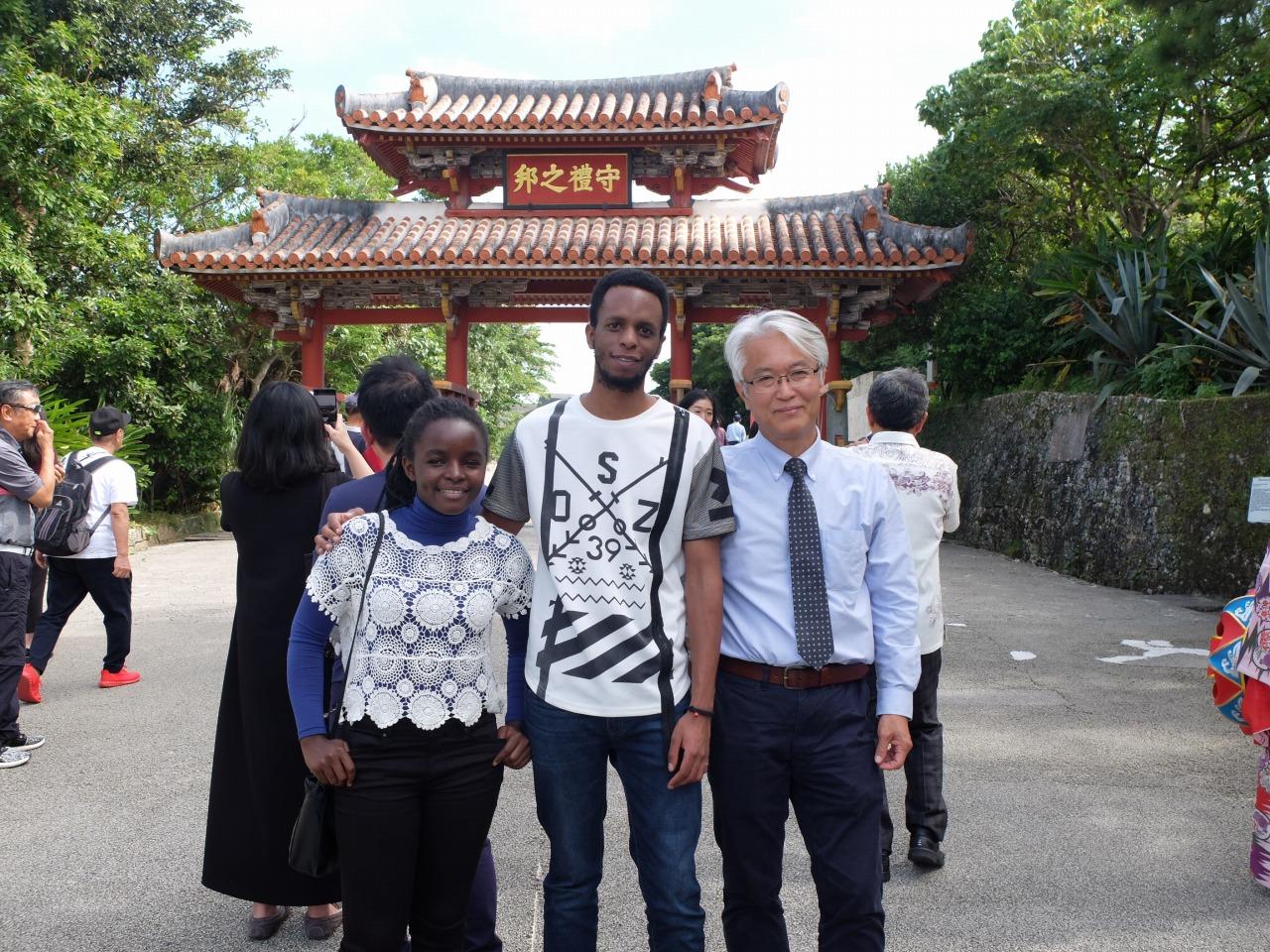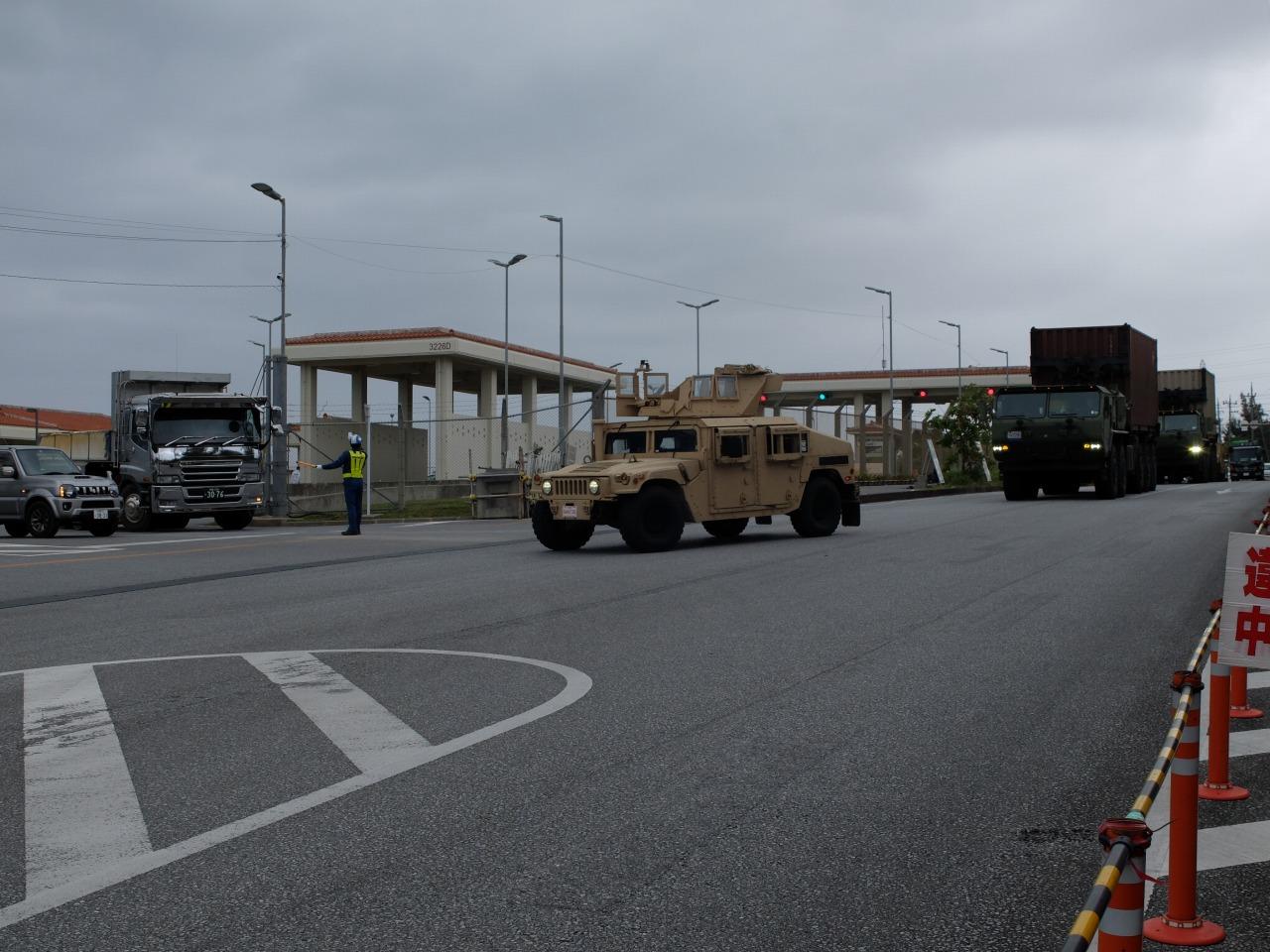2019年11月15~20日、ヘレンとオクタブが、2人の母校であるプロテスタント人文・社会科学大学(PIASS)の先生で一時帰国中の佐々木和之先生と共に、沖縄にスタディツアーへ行ってきました。これは平和構築を学ぶ一環として、昨年度に留学していたシュクルとロドリグと同じように、佐々木先生が連れていっているものです。
博物館、米軍基地、糸数アブチラガマを訪れ学んだことを自国の状況と比較しつつ、沖縄から帰ってきたあとも「自分に何ができるのか」を真剣に考えてくれているようです。
以下、ヘレンからのレポートになります。
From November 15th to November 20th, I got the chance to travel from Tokyo to Okinawa with Sasaki Sensei and Octave-san, and to visit different historical places about Okinawa and its people. The study tour went well and was very fruitful; we visited different places that I will discuss into three categories: peace museums, US military bases, and the cave.

First, I had the chance to visit two peace museums: Himeyuri Peace Museum and Okinawa Prefectural Peace Memorial Museum. These two museums both talk about the war in Okinawa starting by its history before the war. However, each museum among the two has its focus on specific details about the war in Okinawa. For example, Himeyuri Peace Museum focuses on the history of the students and teachers from Okinawa Female Normal School and Okinawa First Girls' High School who died during the war; it shows how some of these students were forced to defend their nation, Japan, and how others believed that fighting for their nation was worthy sacrifice; they believed in "goyoksai" which means die gracefully for honor and noble cause. In this museum, it is shown that other people died because they were forced to kill themselves using poison; suicide was their only option because they believed it was better to die than to be a slave of the Americans. On the other hand, the Okinawa Prefectural Peace Memorial Museum talks about the general history of Okinawa with emphasis on the war; this museum has blocks on which there are writing names of the people who died, these people are not only Okinawan, there are also US soldiers and others nationalities who died during the war; this was so surprising and inspiring for me because it is not usual to see people commemorate those from the opposite part in conflict.
Second, we also visited three different US military bases: in Futenma, in Henoko and in Kadena. These bases are not the only ones in Okinawa; I was surprised to hear that there are different US military bases all around Okinawa and it was so surprising to see American military vehicles all around the cities of Okinawa. Compared to the main land Japan, Okinawa has the majority of US military bases. These military bases have things in common, as not far from the population, use of helicopters day and night, have taken people's land since the end of the war, do not act according to the Japan's law, etc. It was shown that the Futenma Air Base is the most dangerous military base because it is surrounded by residential area including elementary schools, middle schools, high schools, university, and houses. The people living near always complain about the noises and risks but in vain, nothing has been done. The Kadena Air Base seems to be the largest military base, because of that, so many people have lost their land; but nothing has been done to help them; this base is so active, airplanes are flying and landing every time. The Camp Schwab in Henoko is still under construction; at our visit there we met people who have been protesting against the military bases, these people started since long time but as they are not well heard, they do their best to delay the construction. I was surprised to see that many of these active people are old and the protest is done every day morning and after lunch.

Last, we also visited a cave at a place called Abuchiragama. This cave represents a great story of the Okinawan war: many people were hidden in it during and up to the end of the war. The cave is very huge and natural; there were soldiers and civilians hidden in the cave. According to the history, that's where wounded soldiers were hidden to get medical care from the students who worked as nurses. It was divided into different sections: meeting room for soldiers, room for people who had incurable diseases waiting for death, place for people with mental diseases because of the traumatic experiences, room for surgeries, resting room for nurses and assistants, a whole for dead bodies, place to cook and other different places. This cave was made for soldiers, but at the entrance of the cave there were civilians hiding themselves too: when the soldiers left the cave, those civilians continued to take care of the wounded soldiers. Some people who remained died and others survived up to the end of the war and some are still alive now; some of them believe that it was a miracle.
Visiting Okinawa was such a great opportunity for me, I learned a lot, especially from the messages of peace that Okinawans spread and wish for the next generations. To see how old people are committed to nonviolently fighting for Peace made me reflect on my country's situation and my responsibility as youth for the future. Since I left Okinawa, I have been thinking about what can be done since the nonviolent direct actions seems not to work at all; I have been thinking of the Okinawan independence, because if Okinawa gains independence from the main land Japan, it will be able to take its own decision about what's happening since the post war period. And because it is not that easy to be done, I just want to call up on the support from other countries to Okinawan. They need our support in their fight for Peace and for the respect to the Article 9 of the Japanese constitution. Being the only place that experienced the land battle in the whole Japan, does not give the US government the right to occupy people's land with military bases; the only thing to say about this situation is that the US government has to respect democracy by considering Okinawan needs and rights.

